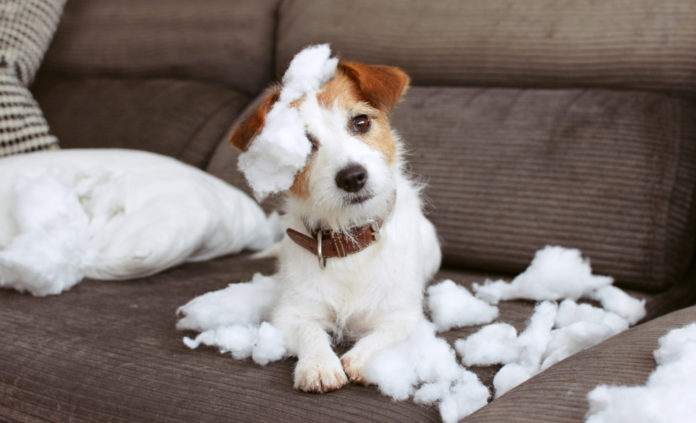
Back-to-school time is a whirlwind of excitement and activity for you and your kids, but one family member who might feel a little left out of the action is your dog. For lots of dogs, the change in routine and a house that’s suddenly quiet and empty can mean separation anxiety.
The last thing you want is to come home after a long day to find that your dog has destroyed the house. It’s heartbreaking to know your pup has experienced such stress, but you also have to clean up the mess. So what’s a busy dog and kid parent to do?
Luckily, there are ways you can help your dog be more comfortable at home alone, and with the right strategy, toys, and treats, your pup may even start to love alone time!
Signs of Separation Anxiety in Dogs
Any dog can develop separation anxiety, but it usually seems to happen most with dogs that have lost a guardian/family member or experienced a traumatic event when home alone. It can also happen if you move or change your dog’s routine.
Separation anxiety is different from your pup feeling a little blue when alone. Dogs with separation anxiety experience extreme stress, and that can cause them to engage in behaviors like:
- Digging and scratching, especially at doors or windows
- Destroying/chewing furniture and other items
- Howling and barking
- Trying to escape
- Urinating or defecating in the house
- Pacing
- Drooling
While all these are classic signs of separation anxiety, it’s still important to rule out other potential causes. Dogs can exhibit similar behaviors if they are incontinent, older and have a medical condition, young and still learning not to chew destructively, or not getting enough exercise or stimulation.
How to Help Dogs with Separation Anxiety Using Treats and Toys
One effective way to help a dog manage separation anxiety is counterconditioning. This is a strategy that helps to retrain your dog. Instead of associating being alone with stress and fear, your dog will come to learn that being alone can be fun and relaxing!
Counterconditioning can be easy and effective, especially if your dog has mild separation anxiety. The trick is to find a way to distract your dog for at least 20 minutes when you first leave the house. This gives your pup something positive to focus on, rather than worrying about being alone.
You’ll need a few supplies, including toys, puzzles, and some really tasty, long-lasting treats. These are some great examples:
- Snuffle mats and snuffle balls stuffed with high-quality, high-value treats
- Puzzle toys with raw or frozen snacks inside, like treats, peanut butter, or bananas
- Lick mats with treats frozen in bone broth
- Chew toys packed with frozen goodies
Remember that your dog should only get these special toys and treats when they’re alone, so take them away as soon as you get home.
Check out Tilted Barn Pet Co. for wholesome, delicious, Canadian-made treats that can keep your pup busy when you’re out of the house.



